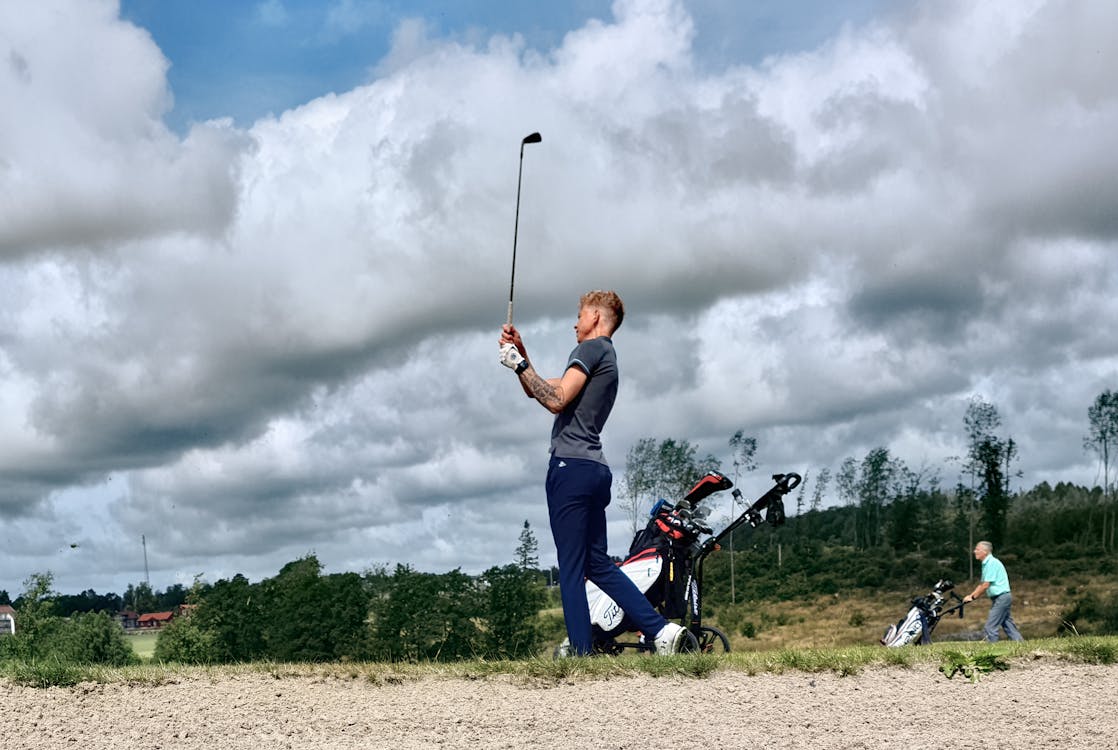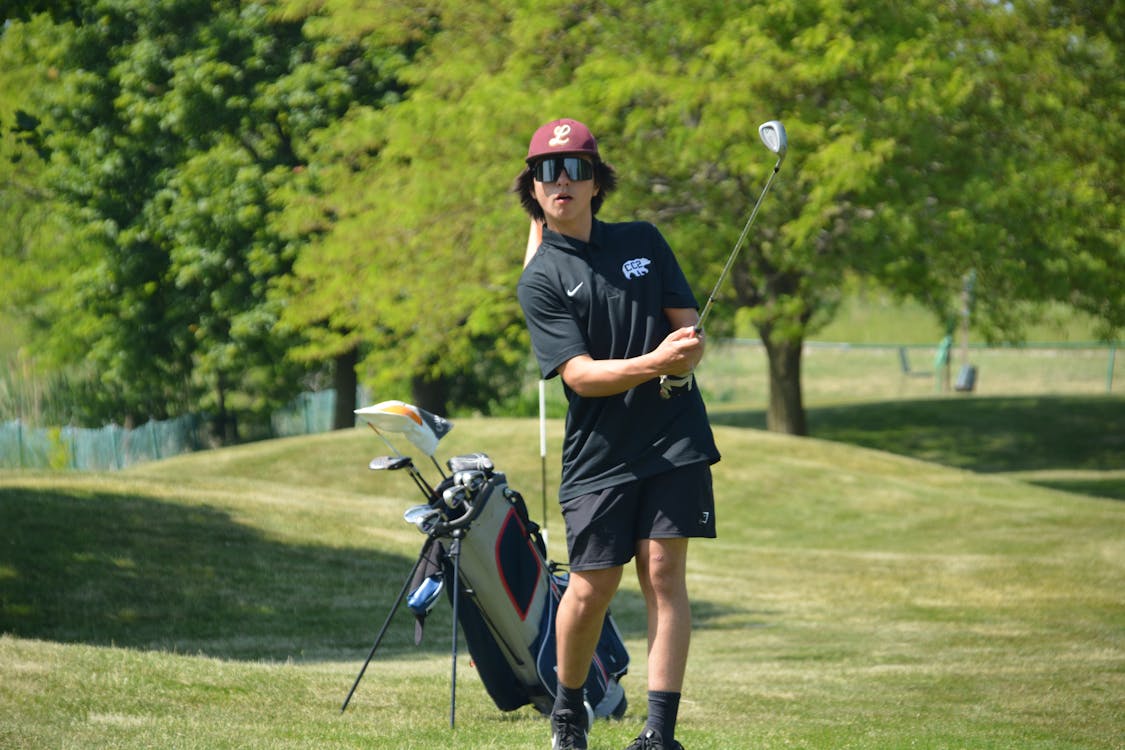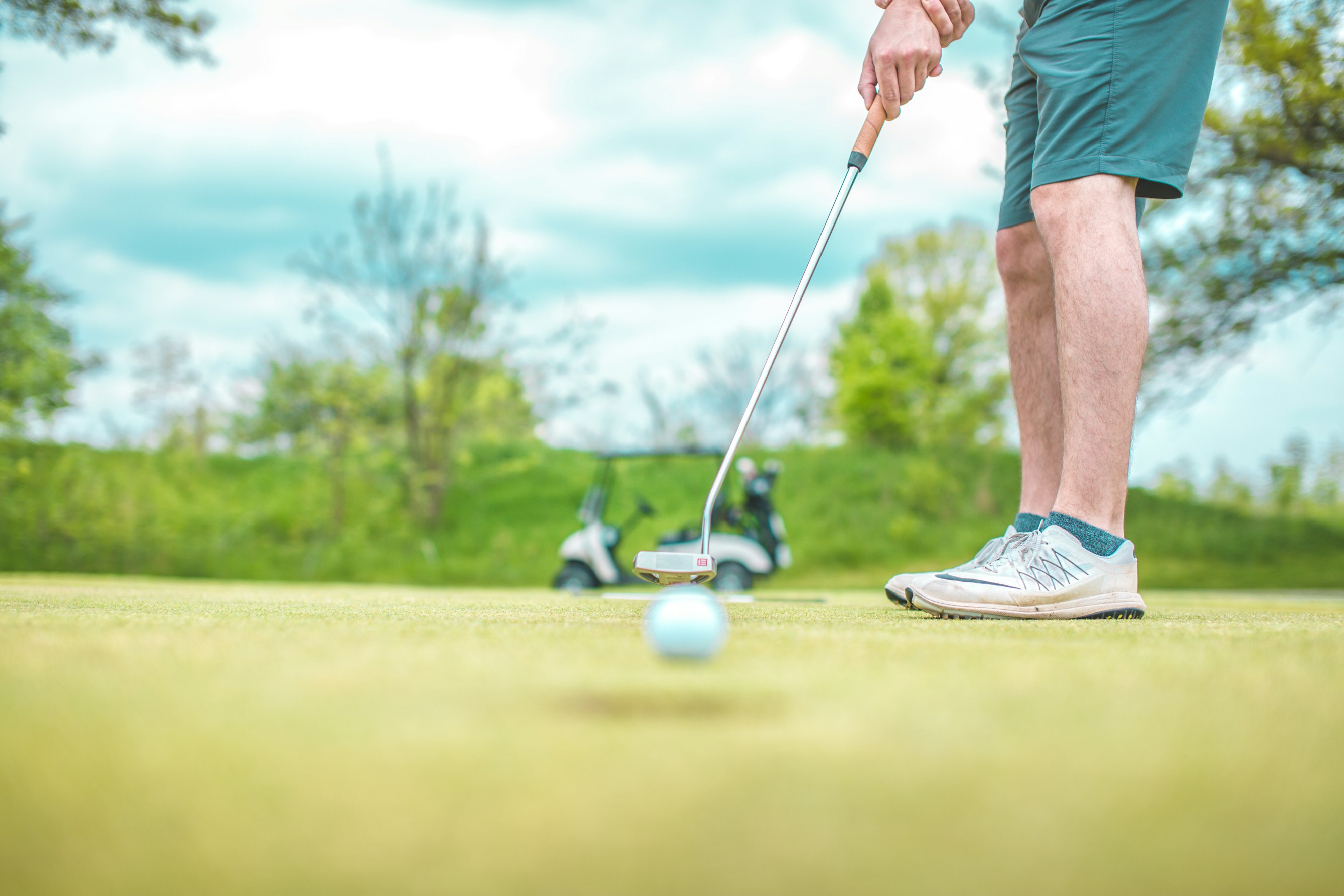The Critical Role of Left Knee Movement in Your Golf Swing
Picking up the basics in golf is pretty easy for most beginners. However, the natural learning curve begins when you start to up your game to the next level.

Picking up the basics in golf is pretty easy for most beginners. However, the natural learning curve begins when you start to up your game to the next level.
Mindless practice gets exhausting, and progress becomes negligible. After a point, your swing refuses to improve, and your shots seem to sway from mediocre to outright disastrous.
To master your swinging prowess beyond this level, you must begin working on the nuances and finer details of shot-making. Today, we'll dive deep into two crucial elements of your swing – your left knee movement and hip rotation.
Let’s begin!
How Your Left Knee and Hip Motions Influence Your Swing
Your Left Knee Movement
Let’s clarify this term before we get into the mechanics. We're using the term "left knee" for a right-handed golfer. So, this term naturally means the right knee for a left-handed golfer.
Your left knee is critical in the overall body mechanics during the swing. It serves as the swivel on which your entire body swings back to muster up power and assume the position for the final shot. It's the pivot on which you choreograph and build the whole shot from backswing to follow through.
For one, your knee is the axle around which your swing and body generate torque to power the shot. Your left knee will generally bend inwards slightly as your swing rises back to its apex. Here, your left knee wields the potential created by the swing.
Then, as you bring down your swing, your knees carry the weight of the swing, transferring it from one foot to the other. This smooth weight and power transfer is only possible with the correct knee position.

(Photo from Martin Magnemyr | pexels.com)
Stable knee movement and technique allow your swing to gather momentum on the downswing without losing balance or direction. Incorrect knee position means your swing will lose power on the downswing and suffer inaccurate contact.
Your Hip Rotation
Your hip movement is another critical part of the choreography that creates the perfect swing. No amount of knee positioning or grip enhancements will help if your hips aren’t positioning up correctly.
The hips enter the action the instant you begin your backswing. As you swing back your club, your hips twist to face away from the front. They don't simply rotate with your arms. They also create the constriction that allows your arms to come back down with speed and force.
Your hips are the central bodily pendulum that initiates and executes the swing. The rotation is gentler during the backswing as your hips allow the arms to sway back and upwards. However, your hip rotation is faster and more sudden on the downswing because it brings the backswing's potential energy when it descends.
As your swing comes down and makes contact, your hips rotate forward. This smooth rotation ensures a seamless follow-through after impact with the ball. This follow-up rotation ensures that the club delivers all the generated power on the ball without losing control of the swing.
How to Perfect Your Knee and Hip Movements
(Photo from Courtney Cook | unsplash.com)
The swing ideally engages your knees and hips in a single, continuous motion. So, let's understand their roles through three phases of your golf swing – the backswing, the downswing, and the crucial follow-through.
Phase 1: Gathering Power through the Backswing
So, the first part of your shot all comes from the backswing. The initial motion locks in your hips and knees and gets the club back high while gathering energy.
The first thing you'll notice is your hip rotating backward. This motion allows your body to prop up and start building up the swing. Your body's weight will transfer more towards the back leg, and your left knee will bend inwards to accommodate this movement.
Your left knee turning and buckling inwards allows you to sustain an excellent overall body position. It keeps your legs poised and stabilizes your center of gravity so you don't lean or tip over along with the club.
The rotating hip and bending knee work together to lock in the potential energy generated from the backswing. Think of it as a roller coaster elevated on the top of the track, waiting to descend. Like a gun cocking and readying up to fire, your hip's reverse rotation and turning knee begin setting up the power and force needed to execute the shot on the downswing.
Phase 2: Executing the Downswing
The downswing is when your shot entirely takes place. Your clubface comes down with the energy gathered during the backswing and makes contact, transferring the power into the ball and making it fly forward.
Your knees orchestrate this entire movement by being the first to move. It rotates out from the inward bend to a slightly outward angle. This rotation prompts your hips and abdomen to follow suit. As your middle and lower body rotates forward, your arms come down with the club, completing the downswing motion.
All these individual rotations must take place in a singular, smooth motion. A connected cycle ensures you don't lose power hesitating or stalling your downswing.
Remember that the full swing isn’t complete yet. By the end of the downswing, your clubface makes contact with the ball, compressing it and propelling it forward with the exerted energy.
Phase 3: Finishing Up with the Follow-through
The follow-through is the concluding motion that brings your swing and shot to a close. Even here, how your knees and hips continue moving remains a crucial part of the motions.
Take note that the motion of your left knee and hips continues the downswing. So, all of these movements should remain in one clean, fell swoop.
As your swing powers through the ball, the club's follow-through allows the gathered momentum to transfer into the ball. The shot's power would diminish if you were to hold back the swing after impact. Your knee-hip-body rotation allows this entire movement to remain seamless and smooth.
Proper knee rotation and hip movement also maintain your balance. A stable stance during follow-through also ensures shot accuracy and increased control. As you arrive at the end of your follow-through, your left knee should lose the bend and assume a straighter stance. Your hips should finish rotating fully to almost face the ball's direction.
Critical Mistakes for your Knee and Hips (And How to Correct them)
Flawed Knee Movement
A stiff left knee is a common problem with golfers struggling with an inefficient swing. When your left knee is rigid, you don’t command as much balance and power in your shot. Your body starts to work against the backswing, leading to clumsy shot execution.
Another problem is when your knees begin to bend excessively. In this instance, your rotation has no stability, and your limp knee will not serve as a strong pivot for the downswing that follows.

(Photo from Carson Fase | pexels.com)
Correct these flaws by keeping your left knee gentle and flexible. Notice if your left knee turns in naturally when you begin your backswing. Practice care in avoiding over-flexibility. If your knee is too soft, they'll bend inwards excessively and derail your body mechanics.
Flawed Hip Rotation
The two most common issues with hip rotation are stiffness or over-rotation. A stiff hip loosens up as you practice your swings more and more. However, over-rotation is a bane that even experienced golfers suffer.
Your hips rotate too much when you're overly enthusiastic to generate power for your shot. It results in a loss of coordination and control, leading to a loss of energy in your drive.
As you practice your drills, pay attention to how much your hips rotate. After a while, you'll become familiar with what the optimum rotation "feels" like and how to repeat it.
A simple sign of over-rotation is the exertion you experience in your spine. Find the optimum rotation by avoiding this pressure in your spine when approaching the apex of your backswing.
Basic Knee-Hip Coordination Drills
Left Knee Drills
You can incorporate knee movements into your regular swing drills. Grab a club and perform your swinging action without a ball. As you swing, notice how your knee buckles, bends, moves, or remains stiff.
Loosen up the left knee if it’s too rigid. Make it more firm if it’s too soft or bends excessively.
Trace your knee’s motions as you initiate the backswing, execute the downswing, and move on to the follow-through. Ensure that the left knee moves in harmony with your hips and the rest of the body performing the swing.
Hip Rotation Drills
Assume your regular swinging stance first. Then, mimic your swinging motion slowly and gradually.
Notice if your right hip moves forward along with your downswing. If it does, keep it steady and stable without moving forward excessively.
Repeat this controlled motion until your body gets familiar with it. Then, you can move on to your average swinging speed while keeping this hip rotation movement in mind.
Advanced Knee-Hip Coordination Drills
Developing a Strong and Flexible Swing
Stretching exercises for your hip, abdomen, knees, and joints serve as excellent drills for flexibility. Developing a flexible core will help with consistent hip rotation when you finally swing the club on the course.
A robust core also leads to a more substantial swing. Focussed yoga on your legs and abdomen will encourage stronger joints. So, they transfer your weight from one point to the other more efficiently during the swing.
Calibrating your Knee-Hip Movement
Seasoned golfers can focus on more minute details of your swing. Perform drills that allow you to track the outward movement of your leading knee.
(Photos from Courtney Cook | unsplash.com)
See if your left knee transitions outside smoothly, creating the space for your arms and club to follow through. Your hips should follow suit as soon as your knees begin the transition. This singular, smooth motion should become fluid and second nature for advanced golfers.
Monitor Your Development
Use a journal or notebook to schedule and record your drills. Alternatively, you can use note-taking apps or logbook apps to store the information on your phone.
The objective here is to record your experiences with the drills and the noticeable changes in your movement. Any positive changes and improvements should go straight into your journal. Also, note areas where your swing continues to struggle and where there's no visible improvement.
This way, you can tailor your drills to target weaker elements of your swing. Plus, it confirms the areas where you think improvement has taken place.
Closing Note
There's no doubt that golf imposes a higher learning curve for players who do not have the proper guidance and insights. Focussing on individual components of your swing allows you to overcome handicaps and perfect your swing from the ground up.
Refining your hip rotation and mastering knee movements will allow you to transcend old flaws in your swing and witness a marked improvement in your body mechanics.
Work on these knee-hip coordination drills and watch your game elevate to a new level quickly!
FAQs
How does poor hip rotation worsen my swing?
Poor hip rotation prevents you from generating substantial power, and you lose coordination on the downswing.
How does poor knee movement affect my swing?
Incorrect knee position or poor motions will lead to losing balance, coordination, and control. Flawed knee position removes the space and balance required to execute a flawless swing.
Can hip and knee drills help improve my swing?
Yes. Dedicated exercises and drills targeted at your hips and knees will help refine and perfect your swing. However, you must ensure that you're performing the correct routines and with the recommended consistency.
What are some amateur mistakes in knee movement?
Beginners often struggle with stiff knee positioning or excessive bending during the backswing. Find an optimum balance where your knee remains flexible yet stable enough to serve as a pivot for the swing.
Are there flexibility exercises that will help my knee and hip rotation?
Yes. Stretching exercises for your joints (especially at the hips and knees) will help you build the mobility required for smooth rotations. Stretching will also prevent excessive strain and risks of injuries during powerful swings.
Do improvements in hip and knee rotations guarantee a good swing?
Correct knee position and optimum hip rotations help refine your swing for more robust and accurate shots. However, you must work on other elements of your swing, including grip, shoulder position, body orientation, feet stance, etc., to improve your swing on all counts.










































































